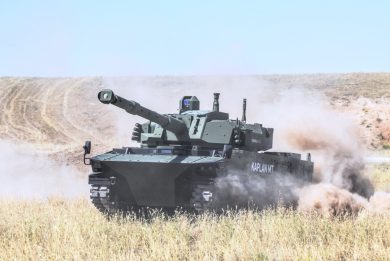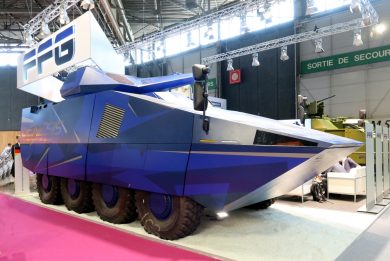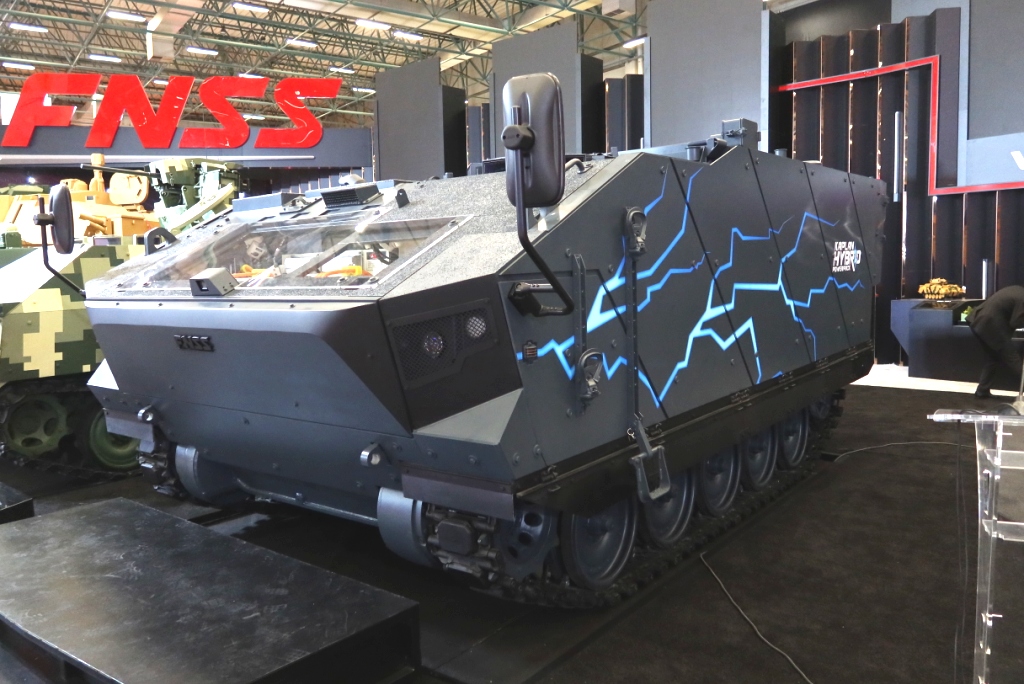
IDEF 2023 – FNSS unveils its hybrid propulsion roadmap
Among the many vehicles exhibited by FNSS in its stand at IDEF 2023, one of the most visited was the Kaplan Hybrid, the technology demonstrator under development by the Ankara-based company that aims to propose that solution on its vehicles in the coming years
The programme was illustrated by Nail Kurt, FNSS General Manager and CEO, who underlined how the company designed and developed the key components of the system, such as the gearbox and the heat management system, highlighting that it took three years to come to the current solution.
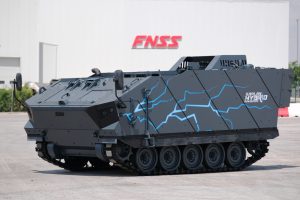
“Following the completion of the current system, which is aimed at 20 tonnes vehicles, the next step will be to develop a solution for vehicles up to 40 tonnes,” Mr. Kurt stated, adding that in perspective when batteries will allow it, a hybrid solution for a 70 tonnes vehicle will be feasible. Increased torque and acceleration, reduced consumption are some of the benefits, not to mention that a serial-hybrid system such as that adopted by FNSS does not need a transmission, a critical element that until now has been acquired abroad.
The work at FNSS started in 2021; the hybrid-parallel solution was immediately discarded in favour of the serial one, which avoids the need for a transmission as electric motors are directly coupled to the sprocket via a gearbox, FNSS having decided to first develop its hybrid powerpack on a tracked vehicle, the Kaplan.
The first phase saw a diesel powered vehicle being used to measure the torque on the tracks input to allow dimensioning the electric motors. The Kaplan was tested in all conditions, maximum slope, pivot turning, cornering maximum speed, etc, data showing that the 60% slope is the most demanding situation, trench and vertical obstacle crossing being also stressful conditions. A challenge is posed when cornering at speed, when the inner track brakes while the external is at top speed. Exploiting the data gathered during tests simulations where run on mathematical models, results allowing establishing the parameters needed for selecting the motors and for designing the gearbox, considering that the Kaplan has a 17.5 tonnes GVW while the solution must cope with vehicles up to 20 tonnes.
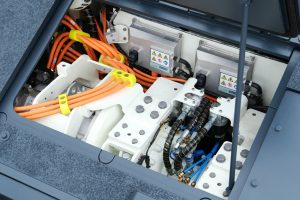
FNSS engineers selected a 230 kW electric motor that works at 800 V tension, this being the maximum power required in the most critical situations, half the power being required when the vehicle is travelling at maximum speed. Each of the motors is linked to a gearbox, the primary power source for the motors being the diesel generator. The Kaplan 10 diesel powerpack being at the front, the hybrid one is located at the same place, with motors and gearboxes at the very front, where the sprockets are, the diesel engine just behind them on the right side of the vehicle. The diesel output is around 300 kW. As the diesel engine typically has a delay in providing the needed power, batteries are used as buffer to cover the initial power gap. All this is controlled by a software developed by FNSS to optimise the whole process.
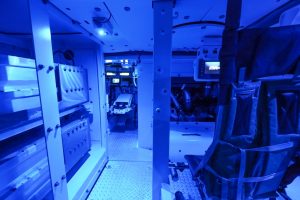
Batteries are located in a cabinet rear left of the troops compartment; these are Lithium Ion Nickel Manganese Cobalt providing 56 kWh, and have been acquired off-the-shelf from a German company, but these will definitely not be those that will power the final solution. Besides acting as energy buffer for mobility, batteries also have a key role in silent watch, when the vehicles remain still shutting down the diesel, as well as in silent cruise, when the tactical situation requires maximum acoustic stealthness.
The control software has two layers, power management and mobility management. The former manages the genset getting data from the throttle, steering wheel, and other and sets power according to the situation. As for mobility management this considers lateral and longitudinal motion control. For the time being no artificial intelligence algorithms have been introduced, however in perspective these are being considered for the heat management system.
Five different cooling systems are installed, one for the two motors, one for the two gearboxes, one for the diesel generator, one for the diesel turbo system, and the final one for batteries.
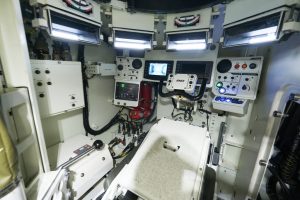
The current solution is considered a technology demonstrator, hence weight optimisation was not the highest priority. However this will become an issue in the final product, s the current solution weighs one tonne more than the purely diesel one. FNSS engineers have already identified areas in which weight reduction might be effective, batteries being one of those. FNSS is working with Altinay, which custom designed a battery solution that will reduce to half the volume and possibly the weight, which should go from 300 to 200 kg. These will take the same volume now used by the auxiliary power unit, hence the vehicle internal layout will not be modified. FNSS acquired motors off-the-shelf; a feasibility study for new motors and gearboxes is underway, three Turkish companies lining up to provide more compact and light systems. This is not true for the diesel engine; currently it is of foreign origin, and FNSS is looking at the national industry, which product might be selected providing its weight would be equal or lower than the current diesel. Overall FNSS engineers consider that a half tonne reduction is possible. As for fuel consumption reduction, this is estimated at least at 5%.
Currently two prototypes have been produced, that exhibited at IDEF is brand new and travelled a few kilometres, the second being currently running on a test bench, and one those trials will be finished mobility trials will start. Industry validation tests are planned to be concluded by year end. A further test session using rubber tracks is also planned.
FNSS is already in discussion with the national customer for a potential insertion of the serial-hybrid powerpack during the Mid-Life Update of the M113s and ACVs in service with Turkish Land Forces. But FNSS is also looking at the export market, where the Turkish company sold in the past numbers of 20 tonnes class vehicles.
Photos courtesy FNSS and P. Valpolini

